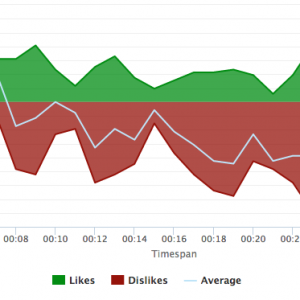How to Conduct a Comprehensive Competitor Analysis

In order to succeed in today’s business landscape, it is essential to understand your competition. Knowing who your competitors are, what they offer, and how they market themselves can provide valuable insight into your own business strategy. Conducting a thorough competitor analysis can help you identify areas for improvement, target new markets, and gain a competitive edge. In this article, we will outline the key steps to conducting a comprehensive competitor analysis.
Understanding the Importance of Competitor Analysis
Competitor analysis is a critical process for businesses of all sizes. By identifying your competitors’ strengths and weaknesses, you can gain insights into their market position and identify opportunities for growth. A thorough competitor analysis can help you:
- Gain a competitive edge
- Identify market opportunities
- Improve your business strategy
In order to reap the benefits of a competitor analysis, it is important to conduct the analysis in a systematic and thorough manner. Below, we will outline the key steps in a comprehensive competitor analysis.
Step 1: Identify Your Competitors
The first step in conducting a competitor analysis is to identify your competitors. This may seem like a simple task, but it can be more complex than you think. Your competitors may not be limited to businesses that offer the same products or services as you. They could also include businesses that offer similar products or services, businesses that target the same audience as you, or businesses that operate in the same geographic area as you.
Once you have identified your competitors, you should make a list of them and gather as much information as possible about each one. This could include their market share, their pricing strategies, their marketing tactics, and their strengths and weaknesses.
Step 2: Analyze Your Competitors’ Strengths and Weaknesses
The next step in conducting a competitor analysis is to analyze your competitors’ strengths and weaknesses. This will help you understand their market position and identify opportunities for growth.
When analyzing your competitors’ strengths, consider factors such as their brand reputation, their product quality, and their customer service. When analyzing their weaknesses, consider factors such as their pricing strategies, their marketing tactics, and their distribution channels.
Step 3: Analyze Your Competitors’ Marketing Strategies
The third step in conducting a competitor analysis is to analyze your competitors’ marketing strategies. This will help you understand how they are positioning themselves in the market and how they are reaching their target audience.
When analyzing your competitors’ marketing strategies, consider factors such as their advertising campaigns, their social media presence, and their content marketing efforts. You should also consider how they are targeting their audience and what channels they are using to reach them.
Step 4: Identify Opportunities for Growth
The final step in conducting a competitor analysis is to identify opportunities for growth. Based on your analysis of your competitors’ strengths and weaknesses, as well as their marketing strategies, you should be able to identify areas where you can improve your own business strategy.
Some potential opportunities for growth could include expanding your product line, improving your pricing strategy, or investing in new marketing channels.
By conducting a thorough and systematic competitor analysis, you can gain valuable insights into your market position and identify opportunities for growth. This can help you gain a competitive edge and improve your overall business strategy.
Identifying Your Key Competitors
The first step in conducting a competitor analysis is to identify your key competitors. This can be done by analyzing your market and identifying companies that offer similar products or services.
Analyzing Your Market
Before you can identify your competitors, you need to understand your market. This involves conducting market research to gather information on industry trends, customer demographics, and competitor profiles. By analyzing your market, you can gain a better understanding of the competitive landscape and identify potential areas for growth.
Market research can be done through surveys, focus groups, and online research. It is important to gather information on your target audience, including their age, gender, income, and purchasing habits. This information can help you tailor your products and services to better meet their needs and preferences.
Additionally, analyzing industry trends can help you stay ahead of the competition. By understanding where the market is headed, you can adapt your business strategy to stay relevant and competitive.
Recognizing Direct and Indirect Competitors
Direct competitors are companies that offer similar products or services to your business. Indirect competitors are companies that offer different products or services, but still compete for the same customers. It is important to identify both direct and indirect competitors in order to gain a holistic understanding of the market and competition.
For example, if you own a coffee shop, your direct competitors would be other coffee shops in the area. Your indirect competitors could include fast food restaurants that serve coffee, or grocery stores that sell coffee beans.
Identifying your competitors can also help you differentiate your business from theirs. By understanding what your competitors offer, you can find ways to offer something unique and valuable to your customers.
Monitoring Competitor Activity
Once you have identified your key competitors, it is important to monitor their activity. This involves analyzing their marketing campaigns, product launches, pricing strategies, and other activities that may impact your business. By monitoring your competitors, you can stay up-to-date on industry trends and identify potential areas of weakness in their strategies.
One way to monitor your competitors is to set up Google Alerts for their company name and relevant keywords. This will notify you when they are mentioned online, allowing you to keep tabs on their activity without constantly checking their website or social media accounts.
Another way to monitor your competitors is to attend industry events and conferences. This can give you insight into their latest products and strategies, as well as provide networking opportunities with other industry professionals.
Overall, identifying your key competitors and monitoring their activity is crucial for staying competitive in your market. By understanding your competition, you can find ways to differentiate your business and stay ahead of the curve.
Gathering Competitor Data
Once you have identified your key competitors, it is important to gather data on their products, services, and marketing strategies. This can be done through a variety of methods, including:
Investigating Competitor Websites
Visiting your competitors’ websites can provide valuable information on their products and services, pricing, and marketing strategies. You can analyze their website design, messaging, and content to gain insights into their branding and customer targeting.
For example, if your competitor offers a similar product to yours but at a lower price, you may want to investigate how they are able to offer it at a lower price point. Is it because they have a more efficient supply chain, or is their product of lower quality? By analyzing their website and pricing strategy, you can gain a better understanding of their competitive advantage.
Utilizing Social Media Channels
Social media channels can be a valuable source of competitor information. By analyzing your competitors’ social media posts and interactions, you can gain insights into their social media strategy and customer engagement.
For instance, if your competitor has a large following on Instagram, you may want to investigate what type of content they are posting and how often. Are they using influencer marketing to promote their products, or are they creating their own content? By analyzing their social media strategy, you can gain insights into how they are building brand awareness and engaging with their customers.
Analyzing Customer Reviews and Testimonials
Customer reviews and testimonials can provide valuable insights into your competitors’ products and services. By analyzing reviews on websites such as Yelp and Google Reviews, you can gain insights into customer feedback and identify potential areas for improvement in your own business.
For example, if your competitor consistently receives negative reviews for their customer service, you may want to investigate how you can improve your own customer service strategy to differentiate yourself in the market.
Leveraging Industry Reports and Market Research
Industry reports and market research can provide a wealth of information on your competitors’ market position, industry trends, and customer demographics. By leveraging these reports, you can gain a better understanding of the competitive landscape and identify potential areas for growth.
For instance, if an industry report shows that your competitor is gaining market share in a particular demographic, you may want to investigate how you can better target that demographic with your own marketing strategy.
Analyzing Competitor Strengths and Weaknesses
Once you have gathered data on your competitors, it is important to analyze their strengths and weaknesses. This involves evaluating their products, services, marketing strategies, and pricing tactics. By analyzing your competitors, you can gain insight into what they are doing well and where they may be falling short.
Assessing Product and Service Offerings
Analyzing your competitors’ products and services can help you identify areas of differentiation and potential areas for improvement in your own offerings. This involves evaluating their product features, quality, and pricing. By examining their products and services, you can gain insight into what they are doing well and where there may be opportunities for you to improve your own offerings.
For example, if your competitor offers a wider range of products or services, you may need to consider expanding your own offerings to remain competitive. Alternatively, if your competitor offers products or services at a lower price point, you may need to consider adjusting your pricing strategy or finding other ways to differentiate your offerings.
Evaluating Marketing Strategies
Analyzing your competitors’ marketing strategies can help you identify areas of strength and potential areas for improvement. This involves evaluating their messaging, branding, and customer targeting. By examining their marketing strategies, you can gain insight into what they are doing well and where there may be opportunities for you to improve your own marketing efforts.
For example, if your competitor has a strong social media presence, you may need to consider investing more time and resources into your own social media marketing. Alternatively, if your competitor has a more effective email marketing strategy, you may need to adjust your own email marketing tactics to remain competitive.
Examining Pricing and Sales Tactics
Analyzing your competitors’ pricing and sales tactics can help you identify areas of competitive advantage and potential areas for improvement. This involves evaluating their pricing strategy, discounts, and promotional offers. By examining their pricing and sales tactics, you can gain insight into what they are doing well and where there may be opportunities for you to improve your own pricing and sales strategies.
For example, if your competitor offers frequent discounts or promotions, you may need to consider adjusting your own pricing strategy to remain competitive. Alternatively, if your competitor has a more effective sales process, you may need to adjust your own sales tactics to better meet the needs of your customers.
Identifying Unique Selling Propositions (USPs)
Identifying your competitors’ unique selling propositions can help you gain insight into what makes them stand out in the market. This involves analyzing their branding, messaging, and customer targeting to identify what sets them apart from other competitors. By identifying your competitors’ USPs, you can gain insight into what your customers value most and what you need to do to remain competitive.
For example, if your competitor’s USP is their commitment to sustainability, you may need to consider adjusting your own sustainability practices to remain competitive. Alternatively, if your competitor’s USP is their exceptional customer service, you may need to invest more time and resources into improving your own customer service experience.
Conclusion
Conducting a comprehensive competitor analysis is an essential step in any business strategy. By understanding your competitors and their strengths and weaknesses, you can identify opportunities for growth and gain a competitive edge. Through thorough market research and analysis of your competitors’ products, services, and marketing strategies, you can develop a more effective business strategy and increase your chances of success.








